The lectionary gospel reading for Trinity 11 in this Year B (Trinity 10 three years ago) is John 6.35, 41–51 which continues our exploration of the ‘Bread of Life’ discourse from last week, following on from the feeding of the 5,000. Once again, we have an odd selection of passage: we are given only 11 verses, since the intermediate verses John 6.36–40 are cut out, either on the grounds that they are effectively repeated in the verses that follow, or perhaps that the passage introduces too many big ideas for one sermon. I am not sure either reason is persuasive; if anyone can make sense of this, do comment below.
When reading the later, ‘Farewell’ discourses earlier in the lectionary cycle, we noted the way that Jesus’ speech in this gospel has a distinct quality to it. The argument does not move in a linear fashion, but appears to circle around, and one idea is linked to another by a word or phrase, rather than following as a logical progression. (We should perhaps note in passing that this is no reason to think it is less historically plausible; much of Jesus’ teaching in the Synoptics is highly abbreviated, and this style is not unlike what we know of Jewish teaching from the time.) Important words are returned to and repeated, and often make connections both with previous episodes and speeches, as well as being picked up later in the narrative. Jo-Ann Brant lists the repeated words in the discourse:
Through Jesus’ speech and his dialogue with his interlocutors, these ideas are revisited, combined and developed.
As I previously noted in relation to John 6.35, the general nature of bread as food and sustenance is again emphasised by Jesus’ use of parallelism: ‘who comes to me/shall not hunger/who believes in me/shall never thirst’, the latter of which connects us back to the woman at the well in chapter 4. It also makes clear what began this dialogue: that ‘feeding’ on Jesus is primarily a metaphor for believing in and trusting him. If and when we eat bread and drink wine as a sign of this, it is a sign of our receiving him, of ‘feeding on him in our hearts, by faith, with thanksgiving’.
(For a study of what Jesus does with bread, looking at the language of all the examples in the New Testament recording Jesus sharing bread, see this article from last year.)
The switch of vocabulary in Jesus’ next comment to the question of ‘seeing’ and ‘believing’ appears to be a change of subject. It is not entirely obvious what previous comment Jesus is referring back to, but most likely his statement in v 26 that the people have seen the signs yet not understood, and focussed only on the mundane reality of eating actual bread. True eating means believing in Jesus, and true seeing means receiving him as God’s tabernacling presence.
The connection between seeing and believing will be expounded at length in chapter 9 with the healing of the man born blind contrasted with the ‘blindness’ of the Pharisees who do not believe. But it reaches its climax in the episode of ‘doubting’ Thomas in John 20, with the wording that runs in close parallel to Jesus’ comment here:
You have seen me and yet do not believe (John 6.36)
Because you have seen me you have believed (John 20.29a)
Blessed are those who have not seen and yet have believed (John 20.29b)
It is quite hard for us, contemporary readers, to get over the feeling that, if only we could meet Jesus in the flesh, many of our problems would be solved. Not so! the Jesus of this gospel tells us. Seeing with the eyes does not lead to faith, and is not a pre-requisite for faith.
Again, Jesus’ next comment does not obviously follow on, as he switches from the response of his audience to the call of God. The saying here forms a pair with verse 44 in our reading: whomever the Father gives to Jesus will come, but no-one can come unless the Father draws him.
Viewed from the human side, those who come to Jesus are those who believe in him, but viewed from the divine side, they are those who my father has given to Jesus (Colin Kruse, TNTC, page 193).
The double reading of human and divine agency occurs all through the gospel: in John 1.12–13, those who believe are the ones who receive Jesus, but are also the ones given new birth by the Father. Jesus tells Nicodemus that no-one can see the kingdom of God unless they are given new birth by the Father, yet the climax of that discourse is found in the invitation to ‘believe’ in his only Son.
The idea that Jesus has ‘come down from heaven’ frames the whole shape of this gospel; the Word who was with God and was God has been made flesh and dwelt amongst us, and Jesus ‘has come from the Father and is returning to the Father’ (John 16.28). Although the language of ‘descending’ is distinctive to the Fourth Gospel, it is not very far from the repeated ‘I have come…’ sayings in the Synoptics, and is clearly found in Paul, in the ‘Christ hymn’ of Phil 2.5–11 and the discussion of gifts brought by Jesus in Eph 4.9–14.
As the discourse progresses, we see the accumulation of ideas: first, Jesus is the bread of life; then Jesus has ‘come down from heaven’; then, in the words of ‘the Jews’, Jesus is the ‘bread that has come down from heaven’; and finally (v 51) Jesus is ‘the living bread that came down from heaven’. The alignment of the will of the Son with the will of the Father looks back to a similar statement in the previous discourse in John 5.19; but the idea that Jesus ‘will lose nothing of all that [the Father] has given him’ is revisited in Jesus’ prayer to the Father in relation to the Twelve, ‘not one of them has been lost’ (John 17.12).
The phrase ‘I will raise it/him on the last day’ is very striking. It is repeated twice in our omitted verses, again in our reading (John 6.44), and once more in next week’s reading (John 6.54), demonstrating how ‘circular’ this discourse it. But the most striking thing is that it is an anticipation of the final resurrection at the end of age, when Jesus returns—an expression of ‘unrealised’ eschatology which is very unusual in this gospel, where for the most part the kingdom and eternal life has come now, into the present. It is a reminder that, though the gospels might have different emphases, they are ultimately working within the same theological framework. (Older readers will remember the rather awful 1970s charismatic song, whose chorus ‘And I will rai-ai-se him up…’ completely misappropriated this language, since it felt that we were raising Jesus up in our song, rather than the other way around!)
The final new idea in our omitted verses is that ‘looking on the Son’ is tantamount to ‘believing in him’, a concept that surely reminds us of the discussion of the Son lifted up as was the snake in the desert in the wilderness Num 22, and that all who looked on it/him were healed/saved.
Allusions to the wilderness continue as the narrator describes ‘the Jews’ as ‘grumbling’, using the onomatopoeic verb gonguzo, verb used in the LXX to describe the Israelites complaining; Jesus agrees with the narrator when he repeats the verb in John 6.43, and Paul also characterises the desert complaints with this verb in 1 Cor 10.10.
This is the first time that the crowd in conversation with Jesus are described as ‘the Jews’, a term often used to mean ‘the Jews who did not believe in Jesus’ rather than ‘the Jews’ in general (since of course most of those who do believe in him, including the Twelve, are themselves Jews!). At this point in the narrative, we might suppose that, of the mixed Jew/Gentile crowd whom Jesus fed, it is only the Jews who object to Jesus’ claim to be superior to Moses and the manna. However, at the end of the discourse we are given a (again, typical) retrospective explanation—’He said these things in the synagogue teaching in Capernaum’ (John 6.5)—which connects back with the topographical reference at the start (‘they went to Capernaum’ John 6.24). Jesus has moved from the open air into the synagogue at some point, and the narrator only informs us after the event.
Part of the objection of ‘the Jews’ arises from their familiarity with Jesus and his family. Though he is in Capernaum and not Nazareth, the accusation here is the same as that found in his hometown in Luke 4.22, where he is also described as ‘Joseph’s son’, and the parallel rejection in Mark 6.3, where he is instead described as ‘Mary’s son’ (with Joseph remaining unmentioned in that gospel). We noted there the power of familiarity to make us sceptical. It is a curious thing that a visiting speaker who comes from elsewhere can appear to speak with more authority than someone we know from our own context—and conversely it is sometimes easier to minister ‘away from home’. In the context particularly of the Fourth Gospel, this is the paradox of the incarnation: God comes to us through a human life, through that which is everyday and familiar, rather than in the spectacular epiphanies that we find in much of the Old Testament—and the promise is that he will continue to do so, to meet us in the everyday.
The quotation from the prophets appears to be from Is 54.13:
All your children will be taught by the LORD, and great will be their peace.
It is part of the vision of hope following a return from exile; it follows on from the description of the suffering servant in chapter 53, and, like other descriptions of the end of exile, develops into a hope of final, eschatological, deliverance by God from all evil. The description of the jewels that decorate the restored city of Jerusalem eventually find their way into the description of The End in Revelation 21.
If the people are to be taught by God, then they either need God to come to them, or they need someone who has been in the presence of God, who has seen God, to come and teach them. Here Jesus picks up the logic of the Prologue of the gospel, echoing its words:
Not that anyone has seen the Father except the one who was with God; he has seen the Father (John 6.46)
No one has ever seen God, but the one and only Son, who is himself God and is at the Father’s side, has made him known (John 1.18)
Having started this section with bread, and circled through questions of seeing and believing, the Father drawing those who will believe in the Son, and the Son losing none of them, the shared will of Father and Son, the hope of resurrection on the final day, Jesus coming down from heaven and bringing the presence and knowledge of God to the people, we finally return to the themes we started with—eating the bread that gives true life.
This final section is again introduced by Jesus’ solemn formula saying: ‘Amen, amen, I say to you…’ The close parallel between ‘whoever believes has eternal life’ and ‘I am the bread of life’ again shows that ‘eating’ is a metaphor for ‘believing and receiving’ Jesus. Jesus returns to the implicit parallel of the feeding of the 5,000 which has been made explicit by his Jewish opponents in verse 31, and sets out a stark contrast: ‘they ate manna and died’. Although the manna came from the sky (‘heaven’) and was provided by God, it was not the spiritual food that they would need to give them life that endures. Once more Jesus is drawing on the contrast we saw in our last reading—the different between food that perishes, eaten by people who perish, and food that endures, eaten by people who have eternal life. Once more, you are what you eat.
Jesus also offers a word play on ‘bread of life’/’living bread’. Bread that brings life has life within it; bread that you eat isn’t ‘alive’, so how can it give you life? Jesus, however, is living bread, so that when you ‘eat’ him you have his life within you. This pun runs parallel to the pun Jesus makes about water in John 4.10: ‘living water’ is the equivalent of our ‘running water’, in that as it flows along it looks alive (and it is actually a better descriptive metaphor). But the living water that Jesus offers actually carries life within it, so it is not only living but life-giving.
Given the complex of ideas, and the circularity of their presentation in their reading, how do we in practice go about preaching on this passage? I have had this challenge last week, and this, and will do so the week after as well, so I need to practice in my preaching what I preach in my writing!
The key is to remember that the task of biblical preaching (and the order or service and the doctrine of the Church of England assumes that preaching will be biblical) is not to tell the congregation everything there is to know about the passage in question! Instead, it is to answer the question:
What is God saying
to these people
at this time
through this text?
That means that, having work through the text in this way, seen the range of different ideas expressing the central truth that we need to receive Jesus by believing that he is who he claims to be, and understood the details of the connections with the passage and with other parts of this gospel and the rest of the New Testament—we now need to ask: of all this, what is God saying to the people I am preaching to this week? I cannot answer that question for you, but I hope this exposition gives the resource from the text that you need to answer that question in your own context.
There is no accompanying video this week or next, as we take our summer break.


 Buy me a Coffee
Buy me a Coffee
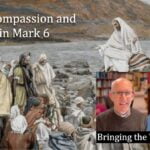
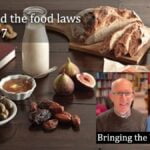

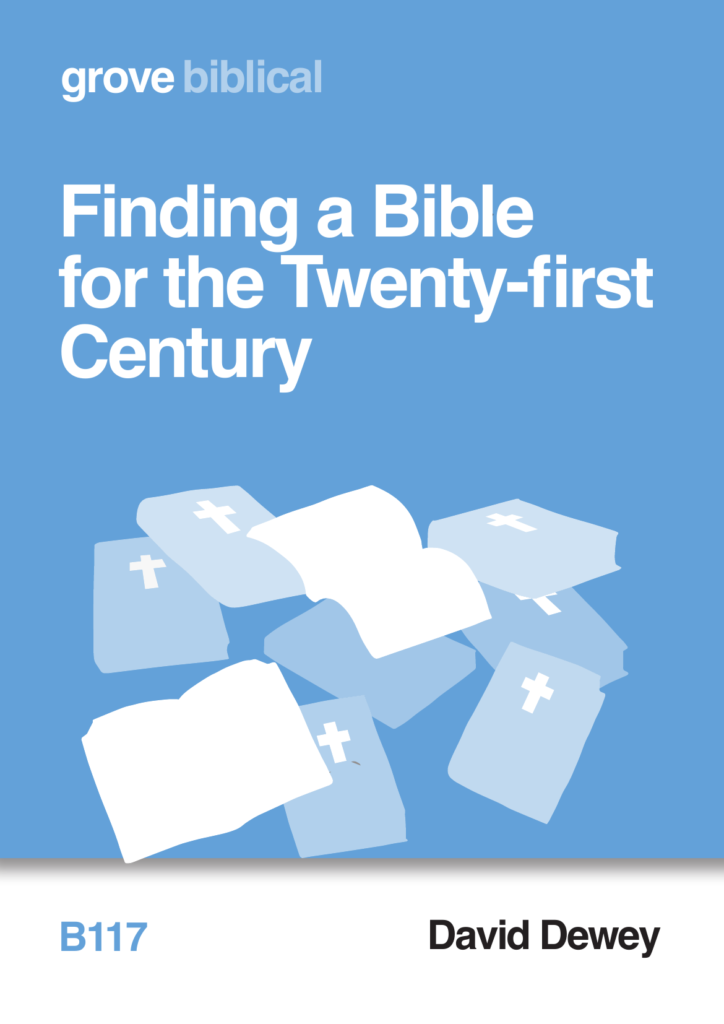



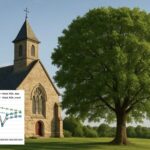

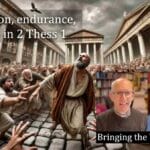


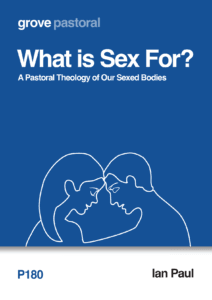
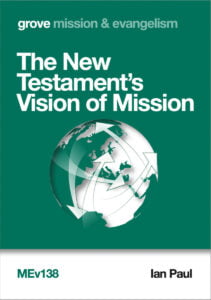
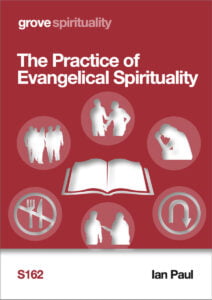
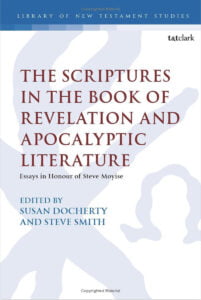
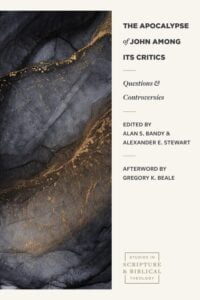
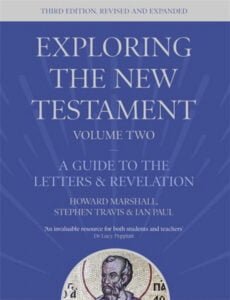
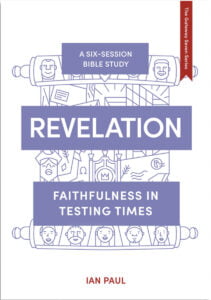
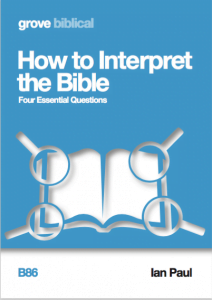
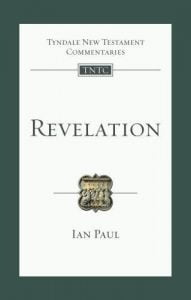
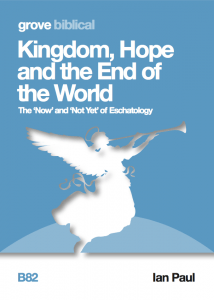
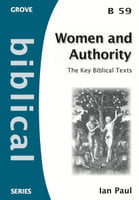
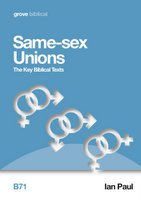

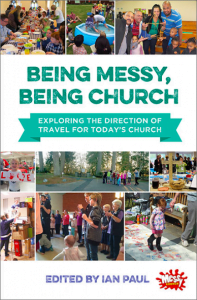
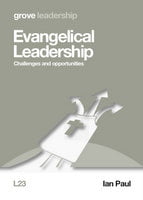
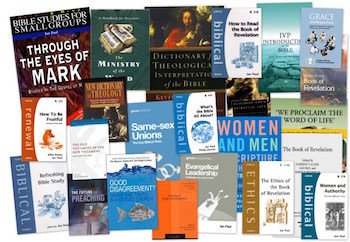
Yes!
And I would suggest once John’s metaphoric ‘feeding’ imagery is grasped it seems Jesus is alluding back to, or perhaps even claiming to be, the tree of life in Eden —and in Revelation?
Then the LORD God said, “Behold, the man has become like one of us in knowing good and evil. Now, lest he reach out his hand and take also of the tree of life and eat, and live forever.” (Genesis 3:22)
Galatians 3:8, 16 the promised seed of Abraham is Christ — who grants life to the nations (ethnos). And yet in Revelation 22:2 we read it is the tree of life that grants life to the ethnos.
And it is of interest to note that in Genesis 3:22 the tree of life in Eden seems to have an authority of its own, in that it would give life if Adam fed on it, despite Adam’s disobedience —and seemingly even against what God wanted to happen. The NT tells us:
“All authority in heaven and on earth has been given to me … whoever feeds on me, he also will live because of me.” (Matthew 28:18; John 6:57)
Did the thief on the cross understand that by going to paradise he would have access to eat from the tree of life? Or perhaps he understood the paradise of God to be the parkland surrounding Ezekiel’s Temple? The tree therefore being at the centre, the Holy of Holies, where the Bread of the Presence was waiting.
I am the bread of life is the first of the recorded “I AM’S; hence it is probably the most significant and worthy of deep investigation.
It confounded the orthodox, to whom belonged “the Oracles of God”
What shall we do, that we may work the works of God? Jesus told them, Do not labour for the food which perishes (John 6:27). In reply, they used the same word Jesus used and asked, “How shall we labour for this?”
Maclaren on the contrast between works and work: “They thought of a great variety of observances and deeds. He gathers them all up into just one work”
“What they wanted, he would not give; what he offered, they would not receive.” (Bruce)
The priest says, ‘Rites and ceremonies.’ The thinker says, ‘Culture, education.’ The moralist says, ‘Do this, that, and the other thing,’ and enumerates a whole series of separate acts. Jesus Christ says, ‘One thing is needful…This is the work of God.’” (Maclaren)
To believe and feed on Christ.
“He who comes to me”
Coming is a very simple action indeed; it seems to have only two things about it, one is, to come away from something, and the other is, to come to something.” (Spurgeon)
Chrysostom says, ‘This expression does not remove our part in the coming, but rather shews that we want help to come.’” (Alford)
I am the living bread which came down from heaven. If anyone eats of this bread, he will live forever:
Many Christians through history have taken this passage as speaking of the Christian practice of communion, the Lord’s Table as instituted by Jesus on the night before His crucifixion (Luke 22:14-23), celebrated among early Christians (Acts 2:42) and taught in Paul’s letters (1 Corinthians 11:23-26). Many have thought that receiving the bread and cup of the Lord’s Table is essential for salvation, and that all who do are guaranteed salvation.
iii. A different opinion has been suggested by several other commentators, that what Jesus spoke of here is not communion, the Lord’s Table – yet the concept is related to that of communion. “Our Lord in this discourse is not indeed speaking directly of the Lord’s Supper, but he does expound the truth which the Lord’s Supper conveys.” (Bruce)
“Many commentators speak as though the word ‘flesh’ self-evidently marked a reference to Holy Communion. It, of course, does nothing of the sort. It is not found in the narratives of the institution, nor in 1 Corinthians 10, nor in 1 Corinthians 11 in connection with the sacrament. Nor is it common in the Fathers in this sense.” (Morris)
“The Fathers commonly expounded this part of our Saviour’s sermon as spoken of the sacrament of the Lord’s supper; and so fell into that error, that none but communicants could be saved; wherefore they also gave the sacrament to infants, and put it into the mouths of dead men.” (Trapp)
“He is saying: ‘You must stop thinking of me as a subject for theological debate; you must take me into you, and you must come into me; and then you will have real life.’” (Barclay)
Morris on the use of flesh: “It is a strong word and one bound to attract attention. Its almost crude forcefulness rivets attention on the historical fact that Christ did give Himself for man.”
“He is teaching the theologians about the Godhead, how that the Unity of God is not the final word of revelation concerning the one God. So long as it is thought that there is but one Person in the Godhead, the Incarnation and the whole scheme of Redemption cannot possibly be understood.” (Trench)
He who believes in Me has everlasting life:
We read this staggering statement with two main thoughts in mind. First, what it means to “believe” in the sense Jesus meant; that is, to trust in, rely on, and cling to. It is a trusting love.[ a resting love[
Second, we think of the astounding nature of this claim. No other prophet or holy man of the Bible ever said such a thing;
“Believe in me and find everlasting life.”
This of course is a digest of the verses expounded in Enduring Word [John 6 ] worth reading. if at all we are interested in the
“deep things of God”.
Believing on and Feeding on are two different corresponding entities.
That are fundamental to real Faith.